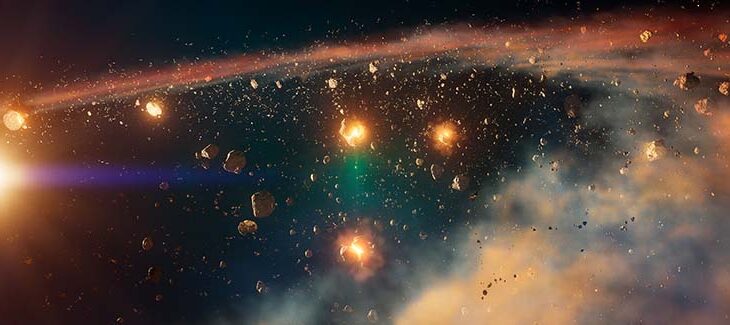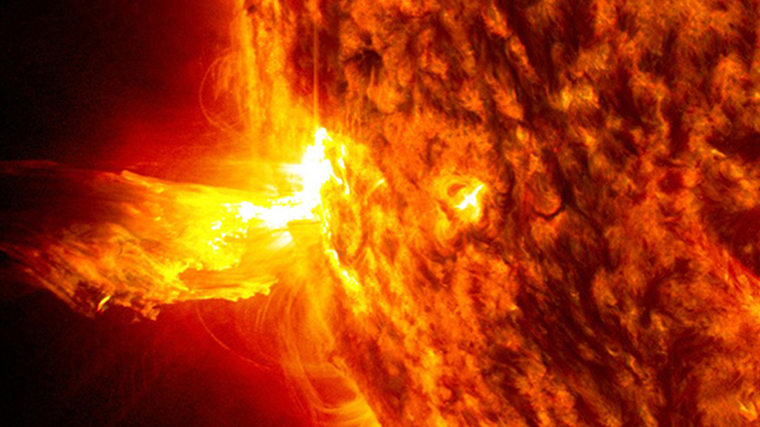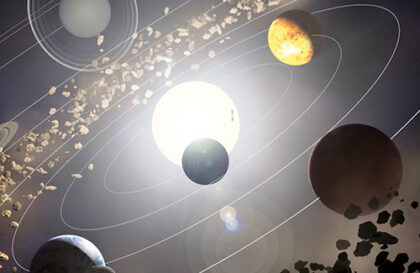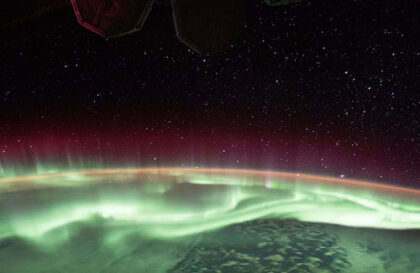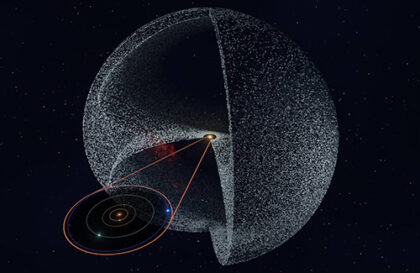If the diameter of the Sun were reduced to 30 cm, the width of Mercury would be 1 mm, Venus would be 2.6 mm, Earth would be 2.7 mm, and Mars would be only 1.4 mm wide.
The path from Mars to Jupiter is three times longer than from the Sun to Mars.
Sure, there’s an asteroid belt in between, but it’s less packed with asteroids than you might think. They will make up only about 4% of the Moon’s mass. In other words, don’t worry about your favorite sci-fi spaceship getting smashed to pieces by asteroids—there’s plenty of empty space around them!
Jupiter is significantly larger than all the inner planets, but the Sun is still about ten times larger than Jupiter, the fifth planet from the Sun.
Saturn! This gas giant is similar to Jupiter, about 12 times smaller than the Sun. As we move away from Saturn, almost nothing attracts our attention. You see, humans need to be more advanced to understand the magnitude of the void that defines much of the universe and our solar system.
Credit: NASA/JPL/Space Science Institute
We finally reach Uranus, but if you think we’re nearing the end of our journey, think again. In fact, Uranus is located somewhere in between the Sun and Pluto.
Neptune is far away. I mean very, very far. The distance from Jupiter to Neptune is five times greater than from Earth to Jupiter. You probably realize that the Universe is almost entirely made up of Nothing. Technically, this is 99.999999999999999999958% of nothing but Nothing.
Finally, we reach Pluto. You can probably understand why some people no longer consider it a planet. To be fair, it is indeed very distant – 40 times further from the Earth than the Earth is from the Sun. If Jupiter were the same size as the word period in 9 Arial font, Pluto would still be 10 meters away! Not only that, but Pluto is tiny—less than half the size of Mercury, to be exact.
If a map of the Solar System were created to scale, with the Moon the size of one pixel, it would require 1,256 side-by-side computer screens to cover its entire length, from the Sun to Pluto. When printed, this map will be 145 meters (475 feet) long, roughly the length of one and a half football fields.
The fastest spaceship ever created is the Parker. At 635,266 km/h (394,735 mph), it would take about a year to reach Pluto. New Horizons would take about ten years to get to Pluto.
If we continued to travel at the same Parker speed beyond Pluto, we would reach the inner edge of the Oort cloud in about 54 years and beyond it in 5,378 years.
Credit: Johns Hopkins University Applied Physics Laboratory
The Oort cloud is really far away. The distance from the Sun to Pluto is only 1/50,000 from the Solar System. Since there’s almost nothing there other than the occasional Pluto-like icy rock and potential comets, travel beyond Pluto is collision-free, to say the least.
Source Ram Robust/Quora
Banner image: Tobias Stierli / Flaeck
Image credit:
https://www.sci.news
https://www.esa.int
https://www.nasa.gov
